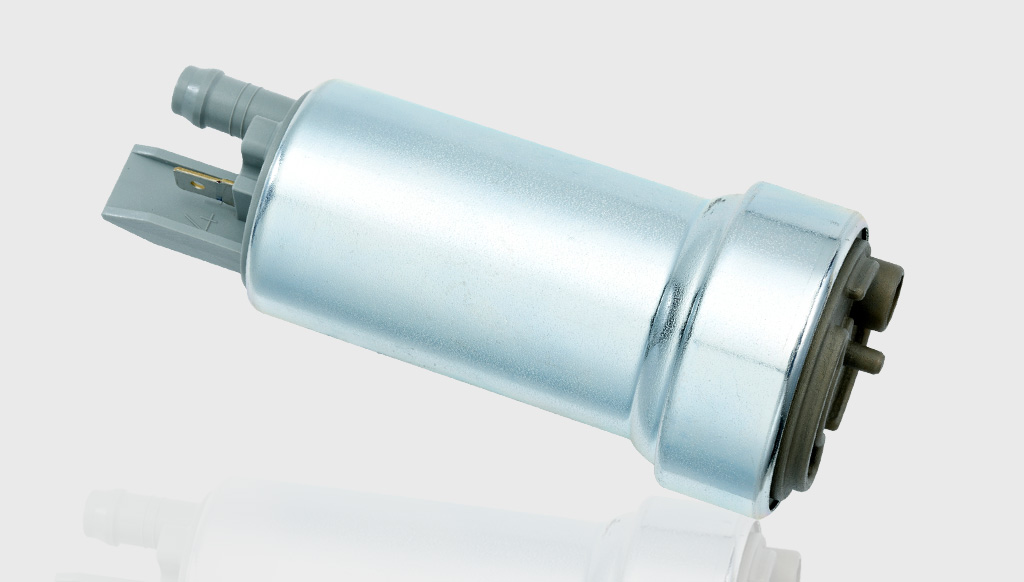Advanced Fuel Pump Technology Driving Performance and Efficiency
Fuel pump technology has evolved rapidly since the days of mechanical fuel pumps. Although mechanical fuel pumps can still be found on classic and vintage cars running carburetors, they simply cannot deliver the higher pressures or volume of fuel required by modern cars and trucks with electronic fuel injection. A mechanical pump moves fuel by cycling a diaphragm inside the pump to increase fuel pressure in the fuel line. It is called ‘mechanical’ because the diaphragm is operated by a lever driven by moving parts (the camshaft) inside the engine. It’s a reliable system, but mechanical fuel pumps can only supply fuel to the engine at very low pressure; often around 10 pounds per square inch or PSI.
By contrast, today’s electric fuel pumps can deliver much more pressure, a requirement of modern fuel injected engines. Unlike mechanical fuel pumps, electric fuel pumps do not need to be attached to the engine to which they supply fuel. When the fuel pump is attached to a hot engine block, the heat can interrupt the fuel supply causing a condition commonly referred to as vapor lock.
Electric pumps can be mounted in the actual fuel tank or in-line in the fuel supply line to push fuel to the engine, which is a much more efficient design. In today’s electronically fuel injected engines, fuel pressure can be varied depending on the demand. Pressure is controlled by the vehicle’s computer (ECM) to increase performance and/or efficiency.
Positive displacement pumps, like gerotor, screw or piston pumps, often referred to as constant volume pumps, can provide higher pressures and operate at lower suction values in the tank. Their capacity is not determined by pressure against the flow rate.
When greater fuel pressure is needed for higher-performance applications, turbine style pumps are often used. They create fuel pressure by centrifugal force from a turbine wheel inside the housing thereby forcing fuel into the fuel line and engine. These designs are very reliable, supply fuel pressure quickly, and generally, are not susceptible to heat issues.
In-tank versions of electric pumps are bathed in fuel and liquid cooled while in-line pumps are often mounted under the vehicle where heat can build up under extreme conditions.
Often, the best solution for higher-performance production car applications is a direct drop-in performance fuel pump module. Designed like original equipment in-tank fuel pumps, they offer the best of both worlds. The module mounts in the tank and has everything needed without the hassles of external plumbing or wiring.
High-performance fuel pump kits are available as a direct replacement for a variety of vehicles. Designed to increase fuel pump performance, they are based on original equipment pump designs for optimum reliability and provide an OE style installation.
For high-performance and race engines that can exceed 750 horsepower a dual channel fuel pump may be the way to go. Instead of a single impeller wheel, dual channel pumps have two parallel rows of turbine blades that feed high pressure fuel lines to the engine. One big advantage to this design is greatly improved hot fuel flow. Dual channel fuel pumps are also generally quieter than single channel pumps.
The aftermarket performance versions of the Dual Channel Single Stage (DCSS) pump design provide ample and reliable fuel flow for high horsepower engines. That dual channel performance comes with TI Automotive’s worldwide reputation for original equipment (OE) advanced engineering and quality control. Innovation and technology are the keys to TI Automotive’s global leadership in the field of fuel delivery systems.
ABOUT TI AUTOMOTIVE
Fluid thinking™ shapes the mindset of TI Automotive. Global automotive manufacturers turn to TI Automotive to develop and produce industry leading automotive fluid systems technology. Two-thirds of the world’s vehicles contain technology from TI Automotive. With 28,000 employees at more than 118 locations in 28 countries, our strength lies in our ability to creatively meet and exceed the increasing fuel economy and emissions regulations of tomorrow’s auto industry.
